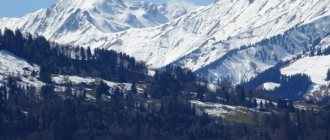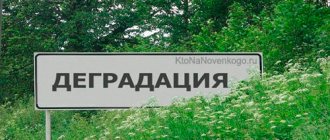Everyone hears about forest fires, which cause big trouble. Experts divide them into three varieties: grassroots, highland and peat (soil). In this article we will analyze a crown fire. So why is it called that? It's simple, the fire spreads through the treetops due to the wind, which carries sparks at high speed, which transmit the fire. Roof fires in coniferous forests are especially dangerous. The trees just flash like lists.
So, now it is clear that a crown fire is a fire passing through the upper level of the forest. A spectacular forest canopy, so to speak.
Note that strong crown fires are rare phenomena. They occur either in very windy weather or in mountainous areas. Stewing them is a problem. It is difficult to reach fire zones. Therefore, there have not yet been cases when fire crews were able to extinguish fires at the initial stage of the fire. The flame rages with all its might, spreading at great speed. In addition, we add that there are no specific features of the spread and behavior of crown fires. That's why it's difficult to extinguish. And although experts make recommendations, the process is still being studied.
Types of crown fire and their characteristics
This type of forest disaster is divided into two types:
- fluent;
- stable.
The first type got its name because the fire spreads quickly from top to top. In this case, the direction of propagation can change dramatically. The speed of a crown fire of this type is much higher than a ground fire. This is where the danger lies. It may seem that the fire zone moving along the ground is small, but in fact it has spread over a large area due to the speed of movement along the tops. By the way, in many areas it is the runaway type who becomes the grassroots type. It turns out that the fire, spreading quickly along the upper level, gradually descends to the lower levels of the forest belt.
Speed of spread of running fire
A sustainable option is to burn the forest both at the tops of trees and at the lower soil level. That is, the flame does not spread along the canopy; it moves evenly to the entire height of the trees, capturing grass and shrubs. Such disasters are called endemic.
Why is a crown fire dangerous? The first danger is the speed of the flame. This indicator depends on the type of disaster. So, with a stable form, the speed does not exceed 1.5 km/h. When running, this figure reaches 5 km/h.
The second danger is a firestorm. Essentially, these are heat flows tending upward. Their impact height reaches 120 m, diameter reaches 100 m. Such flows move in a united front with the flame, creating a thermal curtain in which everything dies. But most importantly, if heat flows are fed by fresh air, then their level will grow to enormous proportions. They unite into a united front. And this is a great danger.
There is one more criterion by which crown fires are classified. This is the speed of propagation. There are three positions here:
- Weak – up to 3 m/s.
- Average – up to 100 m/s.
- Strong – exceeds 100 m/s.
The third danger is sparks, or rather their accumulation. These tiny particles of burning pine needles and wood scatter hundreds of meters beyond the fire zone. Where they fell, new fire zones begin.
Sparks flying
In Russia, the number of forest fires decreases annually, but their area increases
Photo by RIA Novosti Although the peak of forest fires usually occurs in the summer, in 2021 alarming reports began to arrive as early as April. Although it seems that today the situation should be improving: after the enormous fires of the summer of 2019, the generals of the Ministry of Emergency Situations tore their uniforms on their chests, promising to work on the mistakes. And the government vowed to spare no expense in creating an effective system to combat fire. It’s no joke: in one summer, almost as much forest burned as was extracted for economic use, where export alone amounted to 20 million tons!
Burning quarry
By April 10, 2021, the press service of Avialesookhrana reported that forest fires were being extinguished on an area of 822 hectares. It seems like a small thing: in the quiet quarantine year of 2021, more than 9 million hectares burned. But the persistent 30-degree heat in April is a long way off, and already because of the fires in the Kurgan region, smog has shrouded the capital of the Urals, Yekaterinburg. How did the authorities combat the scourge? They sent inspectors to dacha settlements and villages, fining people for burning grass and garbage, even in barrels . At the same time, they were attracted by the smell of barbecue: if a summer resident’s grill is located more than five meters from the house, and there is a fire extinguisher and a container of sand at hand, then fine. And if closer, then there is a reason to impose a fine of 4 to 40 thousand rubles. The Ministry of Emergency Situations assured that this measure was forced.
It is not surprising that in the Tyumen region, where the density of fires was the highest, the “irresponsible” population had to fight the fire alone - there are not enough employees, everyone is on a mission. But environmentalists noted that the problem is not only the “dry season” and the careless residents. The fire began on April 15, and the state of emergency was introduced only on May 11. Tyumen Governor Alexander Moor, whom journalists often dismiss, had no reason to give his opponents a new trump card. To listen to him, 90% of the fires have long been extinguished.
Support the publication
- Join the CLAN
Or
“Government agencies started cutting down the grass - this is considered a fire-prevention measure in federal and regional plans,” says Alexey Yaroshenko, head of the Greenpeace forestry department. – Foresters begin to burn the grass from their forests, and people think: “If they can, then why can’t we?” Then the authorities began to underestimate the scale . Remote monitoring of the Rosleskhoz ISDM system showed that from the beginning of the year to May 24, forest fires in the Tyumen region covered more than 1.27 million hectares, and the official report of the Avialesookhrana spoke of less than 200 thousand hectares.
It turned out that the largest category engulfed in fire in the Tyumen region was former collective and state farm forests. Until recently, if they were consumed by flames, it was not considered forest fires at all. They were recently added to the Forest Fund, but foresters often don’t even know where the border is between these “add-on” lands and agricultural lands, for which they are not responsible at all. This often happens in Russia: if a road, for example, is not assigned to anyone, it will not be repaired for centuries. And “nobody’s” fire is considered a fire . As a result, before the arrival of professionals from the federal reserve of Avialesookhrana in the same Tyumen region, the fire raged for more than three weeks. And it reached its peak when the spectacular dropping of water from airplanes onto a burning forest, which is shown on the “box,” helps like a poultice for the dead. And the fire usually stops with the onset of heavy rains.
Officials know about this. And while they assure that nothing terrible is happening in the region, local priests pray earnestly, calling for rain. And real work on mistakes is unlikely.
According to official statistics, the fires of the summer of 2021 “ate” 15.7 million hectares. This is more than 60 times the territory of Moscow, but far from a record: in 2012, 18.2 million hectares burned, and in 2018 – 15.4 million hectares. Why did forest fires become the main topic in 2019? the winds were unlucky that year : smog blanketed the Siberian megacities for two weeks and resulted in a media scandal. In 2021, forests 800 km from Krasnoyarsk also burned brightly, but the wind carried the smoke towards Yakutia.
Responsible persons traditionally claim that the forest is burning in the so-called “control zones.” And, according to the order of the Ministry of Natural Resources, it is not necessary to extinguish fires in them, because they are terribly far from the places where people live. And the costs of extinguishing the fire will exceed the damage from its consequences. The order was issued in 2015, but the authorities long ago got used to it and rolled a bunch of territories where people live or work into “control zones.” On paper, the process of forest protection is strictly regulated, and various commissions are created. But in fact, the forest tenant is responsible for fire safety, and it is easier for him to pay a small fine in the extreme than to hire teams of firefighters. Plus, the authorities turn a blind eye to the fact that logging is being carried out on the territory (that is, the equipment arrived normally), but it is considered a “control zone”, where supposedly you can’t walk or drive through it.
According to Pyotr Tsvetkov from the Forest Institute of the Krasnoyarsk Scientific Center of the SB RAS, the “control zones” covered almost half of the Forest Fund of the Russian Federation. And only 10% of forest fires are extinguished - mainly around Moscow, St. Petersburg and large cities. To justify their inaction, officials used out-of-context expert opinions that forest fires are beneficial. There are cases when fire destroys moss that prevents seeds from reaching the soil, and thereby promotes natural regeneration. Some species of pine trees have cones filled with resin and open only during fires. However, this does not mean that the 15 million hectares of burned forest were beneficial. It will take half a century for even a scanty birch tree to grow on the site of the fire instead of mast larches. During this time, species biodiversity will change and the balance of the ecosystem will be disrupted.
Having temporarily become political, the issue of forest fire protection immediately gave rise to attempts by various interest groups to create a corporation to neutralize this threat. At government expense, of course. The smoke in Siberia did not clear when the Ministry of Natural Resources and Rosleskhoz submitted a “package of measures” to the government. It is proposed to return the authority to determine control zones from the regional to the federal level, increase the staff of the Aviation Forestry Service and purchase many new aircraft for it.
But even if the money did flow in, the situation on the ground is dire. In 2020, the head of the Ural Avialesookhrana base, Denis Shupletsov, admitted that he does not have his own aircraft at all: “All the equipment is auction. Four An-2 aircraft, two An-12 aircraft, a Mi-2 helicopter, a Mi-8 helicopter and a Robinson helicopter are operating.” Local media reported that when the head of the Ministry of Emergency Situations, Evgeny Zinichev, arrived in the region, for his convenience, the only helicopter carrying water to the site of extinguishing a forest fire in the Denezhkin Kamen federal reserve was removed.
A shocking figure was announced: in Russia there are now approximately the same number of foresters as in modest Belarus - the rest were disbanded for the same savings. Or perhaps so as not to interfere with the theft of wood.
Forest from Wonderland
Judging by official statistics, in Russia in the 2010s there were an average of 140 thousand fires annually. In 1995 there were more than twice as many – 295 thousand. This is fifth place in the world, ahead of us are countries such as France, Italy, and Great Britain. Some will say that our situation is good, better than in Europe. But there, the statistics include all fires (for example, when a garbage container burns), while here we only have those where there is damage. That is, only in buildings, on transport and in forests.
The difference in approaches manifests itself when taking into account those killed in fires, which cannot be particularly hidden. In Russia there are 8.7 thousand of them - two and a half times more than the world leader in fires - the USA. In total, 9.5 thousand citizens die in emergency situations, and another 30 thousand are saved by Emergency Situations Ministry employees (according to their own statistics). According to the World Health Organization, it also turns out that Russia has one of the highest mortality rates from fires . There are 7.9 deaths per 100 thousand Russians. Only African countries like Angola, Somalia, and Burundi are higher than us. But their government spending on fire safety is several times lower. And the “dry season,” which our officials like to use as an excuse, lasts most of the year.
With absolute leadership in deaths, for some reason we have fewer casualties than in France, for example. About 9 thousand died in the fire, and less than 10 thousand Russians were injured. Such a ratio cannot be found in Europe; usually there are many times more victims. But here people are not used to asking for help if they have some kind of burns that will go away on their own. The statistics most often include those hospitalized and those who applied for insurance benefits.
In terms of the number of professional firefighters, we are again ahead: we have more than 220 thousand firefighters. And 470 thousand people come out with private fire brigade and volunteers. There are 345 thousand firefighters in the USA (although only professionals are counted there). There are 185 firefighters per 100 thousand Russians, while in the European Union there are an average of 67.
It is difficult to calculate how much fire safety costs the budget. There are even a lot of government pockets, not to mention enterprises where there may be one “fire safety” engineer on staff, or maybe a whole team with vehicles. According to the budget of the Ministry of Emergency Situations in the 2010s, an average of 35 billion rubles were spent on firefighters, and specifically on forest protection - 15 billion. Rosleskhoz spends about 25 billion rubles for the same purposes. For comparison, our American colleagues have a territory half as large and a budget six times larger.
Another Russian paradox: the number of fires in Russia is decreasing from year to year, but the forest area covered by these fires is growing . The Accounts Chamber announced that for 2016–2018. The area of forest fires increased threefold: from 2.7 to 8.5 million hectares. No wonder: this is a time of falling oil prices and aggravations with the West, during which all government services were told to tighten their belts. Over the same period, the estimate of “standing wood losses” also increased – from 37.5 to 51.9 million cubic meters. meters. There were suspicions that the fires were being deliberately set to hide illegal logging.
The red rooster pecked
There's nothing new under the sun. As AN has already been told, at the end of 2006, Russia adopted a new Forest Code, which still makes specialists widen their eyes in horror. First of all, 83 thousand forest rangers were fired , retaining only 680 inspectors as part of Rosprirodnadzor. In some regions, forest protection was recreated, but in most regions it was decided that private tenants would handle the protection of the tracts. In the Bryansk or Vologda region there was one forester per 1 thousand hectares of forest, and in some places there are only 2-3 rangers per 25-30 thousand hectares of taiga. They were allotted 20 liters of gasoline per month for everyone. And how should they eliminate dead wood, which is one of the main causes of fires?
In addition, the functions of forest protection have been pushed from the state neck to the regions . This means that there is no buffer left between local officials and businessmen who hunt and take saunas together. There are plenty of cases where a tenant, favored by the authorities, demolished a protected forest and built cottages without any approval. And the police laugh at the act drawn up by the forester: “This is now your boss, you fool!” Many Air Forest Protection bases were liquidated, and instead each region began to reassemble this bicycle. And if the Tula region catches fire, it will not be possible, as before, to automatically transfer equipment from neighboring Orel, Ryazan, Bryansk, Lipetsk to help it. Here we need agreements or a shout from Moscow.
According to various estimates, from 30 to 70 million hectares of forests were not included in the Forest Fund at all. These are not only the lands of bankrupt state farms overgrown with trees. In Soviet times, there were “assigned forests” - sometimes thousands of hectares, where state farmers could cut, for example, firewood, but under no circumstances engage in commercial timber harvesting. For some reason, they couldn’t be registered for 20 years, and the uncertain status of the land is a sweet topic for fraud.
In the spring of 2021, Speaker of the Federation Council Valentina Matvienko unexpectedly proposed to Prime Minister Dmitry Medvedev to suspend the export of Russian timber . The third person in the country said that the industry is “ruled by the criminal shadow sector,” and massive logging is being carried out under the guise of sanitary protection of forests. Matvienko proposed monitoring all contracts concluded for 49 years, which bring pennies into the treasury, and some of the officials transfer virgin forests to their buddies at 100 rubles per hectare.
President Vladimir Putin previously stated that the state is failing to restore order in forestry: “It is a very corrupt area, extremely, and very criminalized.” The national leader confirmed that the danger of lime in the forest is not at all an old woman’s lament. And if the state does not take radical measures, then there will be no forests left in the Far East and European Russia.
When in 2010 the Investigative Committee of the Russian Federation opened several criminal cases on the fact of deliberate forest fires, the head of Rosleskhoz, Viktor Maslyakov, confirmed: “There are serious suspicions that the fires were set deliberately. Such fires are committed mainly where there is high-quality tree stand , and near roads, so that there is less hassle with removal.” In 2013, Maslyakov himself “left,” but the described scheme is alive and well to this day.
There are experts who can arrange a so-called “ground fire,” when the fire passes through the grass, damaging only the base of the tree. But according to the papers, the forest is considered burned. And the guys who cut it down and sell it will also be paid extra from the budget.
“Approximately every third fire we have is a “left” one, obviously initiated by someone,” says a forestry worker from the Vologda region. “It happens that after a couple of days you come to the ashes, and there is no burning, no coals - only neat stumps. This means that the traditional scheme was used: they stole the timber, and then set fire to write off the stolen goods as losses. In addition, the forest is taken from good ones, from nature reserves or protected areas, which cannot be cut down legally. And when a real fire occurs, the fire remains. By law, an auction must be held to cut it down. But no one needs this; the fire pit stands undisassembled for several years, provoking new fires. And if after two days the plot has already been registered, it means that it was cut down before the incident. I have never heard of anyone actually being punished for this. The maximum is an article for negligence brought against an “unspecified circle of persons.” This is a sure sign that in a year the case will be closed.
Also in 2010, when Moscow was shrouded in smog, it became clear that with the new rules of the game half of Russia could burn down - no one would lay a finger on it. What was the cost of one story with the village of Mokhovoe near Moscow, where 12 people died in a fire . Until this moment, the fires had been raging around for two weeks - no one even tried to evacuate people, because, according to reports, they were small fires. From Mokhovoy to Moscow is a little more than 100 km.
Common cause
One day, the governor of the Moscow region, Andrei Vorobyov, attended a Ministry of Emergency Situations exercise to eliminate forest fires in the Yegoryevsky district. The departmental “Forest News” reported that for the exercise, the forest was specially set on fire in three places at once. The training lasted three days! It would seem that nothing is particularly terrible, because, according to Rosleskhoz, the total reserve of “forest wood” in the Russian Federation by 2012 amounted to 83 billion cubic meters, which spread over an area of over a billion hectares. Forestry accounts for 1.8% of GDP. The share of Russian products in the global wood market is 3.6% - this includes wood, lumber, cellulose, cardboard, and paper. In the Arkhangelsk or Irkutsk region, 97% of timber is exported, this is a serious source of income for the regions.
Nevertheless, even in Rosleskhoz they admit that the king has no clothes, and we have fewer forests available for industry than in Finland . How can this be if Finland is smaller than the Komi Republic alone?
Here, as usual, everything is smooth on paper: in textbooks, Russia accounts for 20% of all forests in the world, half of all coniferous forests, and half the area of the largest country on the planet is covered with trees. However, only a third of Russian forests are in areas that are suitable for efficient management. Another third is of no resource value, plus a third is in hard-to-reach areas with a harsh climate, where it is impossible to reproduce forests after cutting down.
Go ahead. On a third of the “effective” areas, a lot of birch and aspen forests have grown, while coniferous trees are needed for industry. This happened due to barbaric logging in the last 30 years, when reforestation was not carried out enough. Where to get pine needles? 300 km from the cutting site to the processing plant is the limit beyond which logging is unprofitable. The road network in Russia is so poorly developed that it is impossible to get close to forest-rich areas. In such cases, the Finns invest in new roads, while our government relies on market participants. And it’s cheaper for them to start a fictitious fire and cut down a protected forest near them.
Although many are shocked by the photos with endless wagons filled with round timber ready for export. However, no more than 30% of the possible harvest volume is cut down in the country. But Karelia, Arkhangelsk, Vologda, Novgorod regions are approaching the point where existing enterprises may be left without timber reserves in economically accessible places. Moreover, there is a great variety of black and gray schemes. For example, according to statistics, it turns out that for heating village houses with wood stoves, permits are issued per year to cut down 19 million cubic meters - 10% of all logging. At least two thirds of this volume is leftist.
It seems that our formidable security forces have given up on the “timber mafia.” And not only because the tycoons of this business are very rich and influential. Gas and oil workers are much richer, but every barrel is under state control. Of the resource sectors of the economy, forestry is the most popular. Start tightening the screws here and it turns out that half the population in some provinces is tied to forestry schemes. Someone processes wood, someone extracts it, someone sells ready-made houses, someone is happy to buy fifteen cubic meters of timber for their dacha at a dumping price.
This is such a dashing thing that it’s better not to wake up. An official who is ordered to prevent “social explosions” would rather join the forestry business than fight with everyone around him. This will probably continue until the population suddenly discovers that they have nowhere to go for mushrooms. And he will demand that the state decisively restore order.
As they were cut down, so they grew
No matter how many forests are destroyed as a result of economic activity, this resource is one way or another replenished. Commercial timber takes 100–120 years to grow. Another thing is that reforestation in Russia has been a long-standing problem.
In the mid-2010s, the Accounts Chamber found that 20% more trees are cut down than planted. And not only are forests destroyed by fire not restored, but sometimes forests that have been destroyed by fire are not cleared for three years “due to the lack of targeted funding.”
The area of Forest Fund lands in need of restoration has increased by 5.6% in just three years - to 31 million hectares! Take, for example, the Arkhangelsk region - the main “forest storehouse” of European Russia. The auditors of the joint venture note: currently, on 23% of the Forest Fund areas the exploited reserves of plantings are exhausted, on 54% their concentration level is low. Coniferous trees are valuable for processing, but soft-leaved trees are easier to grow. Over the past decade, the area of birch plantations has increased by 45%, that is, by almost 3 million hectares. In 1956, 8% of forest areas were occupied by soft-leaved plantations, and today – three times more!
In the country, the share of seeds with valuable hereditary properties was only 3%. For comparison: in Scandinavian countries – up to 90%. De jure in Russia, 8 tree species are recognized as forest-forming, but only pine, larch and spruce are harvested. And the seed shortage for them ranged from 14 to 48%. And who is to blame? The eternal question, like “what to do?”
Add AN to your sources so as not to miss important events - Yandex News
- In the Chelyabinsk region, 99% of forest fires are extinguished within the first 24 hours
- Yakutia: face to face with forest fires
- Head of the DPR Pushilin: the military conflict in Donbass is “coming to its logical conclusion”
- The situation with forest fires in Siberia has worsened sharply
- The “Dear Neighbors” concert in the Penza region caused a culture shock among Russian netizens
- The Ministry of Emergency Situations intends to relax the rules for making fires when burning dry grass in a summer cottage
- To fight fires in Yakutia, 6 rubles 90 kopecks per hectare of forest are allocated
- In Russia, the number of forest fires decreases annually, but their area increases
- The Ministry of Emergency Situations announced a storm warning in Crimea from July 21 to 22
- “PolitRussia”: a NATO pilot “disgraced himself” over the Baltic after “mocking” a Russian plane
- The cause of serious forest fires in Turkey has not yet been established
- Ex-commander of the Black Sea Fleet Komoyedov: Admiral Burke’s words about the possibility of an attack on Russian ships “smack of a clear threat”
- Why can nature take revenge on us?
- There are no plans yet to evacuate tourists from Turkey due to forest fires.
Become a member of the CLAN and every Tuesday you will receive the latest issue of “Arguments of the Week” with a discount of more than 70%, along with exclusive materials not included in the newspaper. Get premium access to a library of the most interesting and popular books, as well as an archive of more than 700 published issues for FREE. In addition, you will have the opportunity to benefit from free legal advice from our experts for a whole year.
- Enter your email address, then select any convenient payment method for your annual subscription
- Scan the QR. In the Sberbank Online application that opens, enter the annual subscription cost (490 rubles). Then send the confirmation code by email
Or
Stay with us. Add us to your sources and subscribe to our social networks.
Yandex Zen Telegram Google News MirTesen Twitter VKontakte Odnoklassniki Facebook
Elimination methods
So, we figured out what a crown fire is and looked at the classification and characteristics. Now let's move on to the important question of what means and forces can be used to extinguish it. There are several effective ways.
- Explosion. For this purpose, special explosive devices are used, which clear the forest of plantings and create an air wave. The latter knocks down the flame, thereby extinguishing the fire. To make the effect of the explosion greater, trees are cut down in an area equal to the area of the explosion. It is clear that the latter indicator depends on the power of the charged charge. Therefore, it is important to accurately observe these three values, accurately adjusting them to each other. There is one important point in this method. Do not cut down close to the ignition zone. In such areas the temperature is high. As practice shows, in many cases, cutting is stopped until an explosive device is planted, which is also not installed. Therefore, they move the explosion zone, where they have to re-cut the forest.
- Launching an encountered fire. This process is controlled. For this purpose, birch bark torches are used. The essence of the extinguishing method is that another front is launched towards the front of the moving flame. That is, a controlled process burns everything in its path that can burn. Therefore, the main fire disaster has no choice but to reduce power. Experts assure that there are no better or more effective options than this method.
- Use of technology. The best option is airplanes and helicopters. But we must take into account that the loading of water into the equipment is limited. Therefore, it often happens that one reset is not enough to extinguish the entire zone. In the meantime, until the plane or helicopter returns, everything flares up with renewed vigor. Therefore, it is better to use the technique if the fire is a small area.
Extinguishing forest fires by helicopters
And some points that can help eliminate overhead forest fires. For example, fires subside at night. But low visibility and darkness create difficult conditions, so only high-class specialists are allowed to extinguish at night. The fire must not be allowed to spread along the mountain slopes. These are dangerous areas. Here it spreads quickly upward.
Natural fire prevention
Eliminating a disaster is a costly, dangerous and time-consuming process. Sometimes it leads to human casualties. Effective prevention of natural disasters is called:
- Creation of mineralized strips up to 60 meters wide with complete burning of the grass cover;
- Sanitary deforestation to remove dead wood and insect-infested trees;
- Improvement of areas for vacationers with reservoirs and entrances to them;
- Construction of helipads for landing equipment of the Ministry of Emergency Situations;
- Educational work among the population (fire instructions).
It is the responsibility of local governments to monitor the correct implementation of fire safety measures. Compliance with fire safety rules is everyone’s personal responsibility.
Air fire extinguishing
This is interesting: Secondary manifestations of fire hazards (FFH)
Ground fires
A few words about ground fire. It does not spread as quickly as the mounted one. In the thicket of the forest between the tree trunks there is no strong wind. Therefore, the fire spreads from tree to tree until the previous one reaches maximum fire activity, so that the flames, high temperatures and thermal energy do not set fire to the neighboring one. Therefore, we can say that ground fires are ordinary forest fires that cover the moss and grass cover of the earth, as well as low-height vegetation. This is the first stage of a forest disaster, which gradually turns into the upper stage.
So, the main distinguishing characteristic of a ground fire is its spread through the lower layer of vegetation. Like the horseman, it is divided into two types: fluent and stable. In the first case, it is rapid spread over dry fallen leaves. This happens in the spring, when the greenery has not yet emerged from under the soil.
The second type manifests itself in the summer during the dry season. Moss, lichens, fallen leaves, dried by the sun, burn quickly. Such a fire lingers in one place for a long time, spreading throughout the entire perimeter. In this case, the soil layer burns deeply. Fallen nuts and seeds remain under the fire, so they will not germinate next year. This also applies to trees, the trunks of which, together with the bark, burn through the core.
Ground fire
By the way, dead wood combustion types are a resistant variety. In fact, the fire is fueled by forest debris, of which there is always a lot. If we talk about the speed of spread of the grassroots type, then here, as in the case of the top type, there are three positions:
- Weak – up to 1 m/s.
- Average – 1-3 m/s.
- Strong – more than 3 m/s.
What happens during a ground fire? Basically, grass, moss and other vegetation of small height burn. Therefore, such fires can be extinguished effectively even with brooms and branches. The main thing is to meet them halfway, knocking out the flames with these simple devices.
An effective option is to dig a trench along the front. Sometimes it will be enough to remove the turf or remove dead wood.
This method is often used; it is used only in calm conditions. They dig a trench and create a fire zone between it and the fire. This is essentially a controlled fire option. An effective way to extinguish a fire at any stage.
What is the danger of ground fires
The biggest danger is the transition to the riding stage. This should not be allowed under any circumstances. Although this often happens if there is a strong wind.
The second danger is the death of all life on earth. This applies to both plants and animals. If the fire cannot be extinguished in time, then the ecosystem in the zone will not soon come to its senses. Vacant areas covered with black ash remain empty for a long time.
Ground fire burns everything deep in the ground
The third danger is thick smoke and toxic substances from burning vegetation. They spread over large areas, which reduces people's well-being. Statistics show that people often die from poisoning from the combustion products of forests.
Classification of forest fires
What classes are fire hazardous areas divided into? Fires that occur in green areas are divided into types:
- Horse.
- Grassroots.
- Underground.
Each class has characteristics, speed of spread, primary characteristics, and features. More on this below.
Horse
Class fire covers branches, leaves, crown. If it is widespread, the grass cover may burn. The speed of propagation is 5-80 km/h. Temperature range 850-1250 degrees Celsius.
Occurs in windy weather. The predecessor is a ground fire. Eliminated with the help of aviation.
Horse fire
Grassroots
This type of fire, unlike a crown fire, spreads directly across the ground cover. Everything is burning.
The classification is:
- According to the speed of spread: fugitive, stable.
- According to the height of the flame formed - strong, medium, weak.
Ground fire
Underground
Underground fires. Represents uncontrolled intra-ground combustion. It can continue until the smoldering layer is completely depleted. It spreads through mine workings and rock cracks.
It is difficult to extinguish, since the source of the fire is in the ground.
underground fire
Peat fires
They also need to be mentioned. Peat is a product formed as a result of incomplete decomposition of plant matter. Moreover, in conditions where there is excess humidity and lack of aeration. That is why this product is the most moisture-intensive of all existing solid fuels.
The causes of forest fires have been discussed above. What factors provoke peat fire? The main ones are the following:
- Improper handling of fire.
- Spontaneous combustion (occurs if the external temperature is above 50 degrees).
- Lightning strike.
The main causes of forest fires
A number of reasons contribute to the emergence and spread of uncontrolled burning in green areas. Some are natural, others are artificial.
Anthropogenic factor
About 80% of forest fires are caused by humans. People neglect existing rules of behavior in nature, which is the main cause of fires.
Conditions and factors contributing to the occurrence and spread of fire:
- Smoking. People with nicotine cravings are careless when removing the ash from their cigarettes. This attitude often causes fires.
- Bonfires. Many people like to go to the forest overnight, light a fire, and cook food on it. As practice shows, the process is not always controlled. To avoid a fire, you must choose a safe place to build a fire.
- Burning leaves and debris. The process is dangerous. A particle flying towards green space can provoke the spread of a forest fire.
- Fireworks. The devices are used by people during holidays. Particles emitted at the moment of explosion smolder. When there is a strong wind, they move towards the massif, setting it on fire.
- Road traffic accidents. An accident near a forest, gas cylinders or sparks can cause a natural fire.
- Arson. Some people are prone to actions aimed at creating artificially caused fires in forests, houses or other objects. According to statistics, about 35% of fire cases are caused by such offenders.
Natural
In most cases, forest fires are caused by humans. But, arbitrary environmental phenomena provoke fire. These include:
- Lightning, dry thunderstorms.
- Earthquakes.
- Tornadoes.
- Spontaneous combustion of peat rocks.
From the above list, dry thunderstorms are the most dangerous. They represent specific clouds with precipitation that does not reach the ground. This is accompanied by strong electrical discharges hitting the trees. Under such conditions, natural combustion of wood is inevitable.
Forest fire statistics for the last five years are shown in the table below:
| 2015 | 2016 | 2017 | 2018 | 2019 | |
| Area of forest land and other categories covered by fires, thousand hectares. | 1620,3 | 2534,8 | 2592,6 | 2475,3 | 1673,8 |
| including forest lands | 1036,1 | 2069,8 | 2111,6 | 2027,8 | 1408,4 |
| standing timber burned, million m3 | 16,5 | 30,1 | 25,4 | 93,1 | 28,7 |
| young growths died, thousand hectares | 86,2 | 294,4 | 119,7 | 126,6 | 102,7 |










